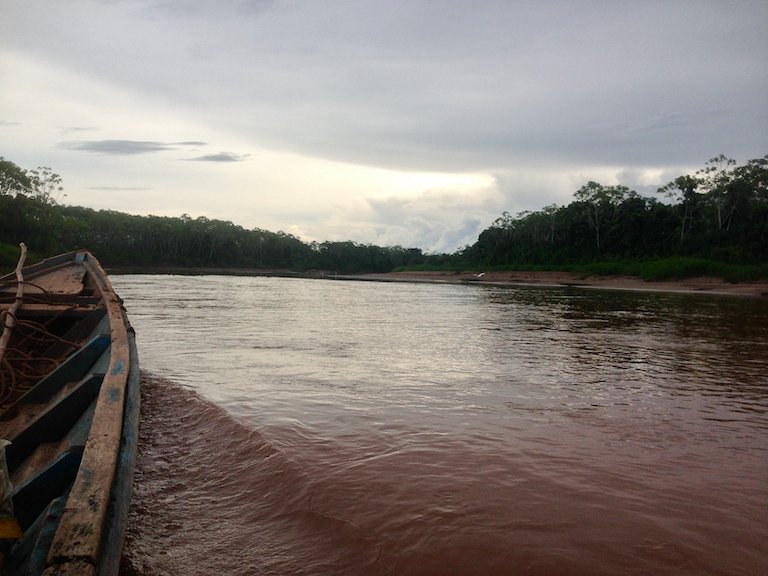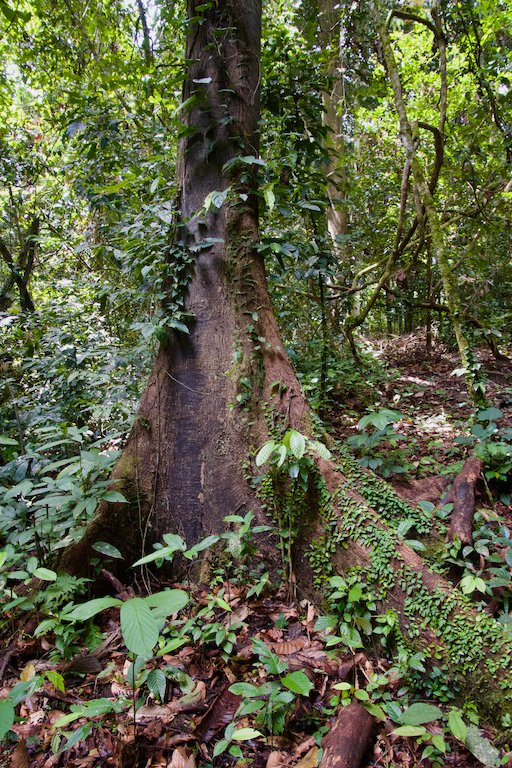- A group of international conservation and environmental organizations is calling on wealthy countries to provide an extra $60 billion in funding a year to protect the planet’s species.
- They argue that the amount compensates for the toll exacted on biodiversity by international trade, which largely benefits rich nations.
- At a March 1 press conference, representatives of the organizations said the inclusion of Indigenous communities, known to be “nature’s best stewards,�? would be critical, and they advocated for the bulk of the financing to be in the form of grants to these communities and other “grassroots�? organizations.
International conservation groups are calling on countries in the Global North to provide billions more dollars every year to protect the world’s biodiversity.
“The future of humanity is literally at stake. People are destroying and consuming nature at devastating rates,�? Patricia Zurita, the CEO of BirdLife International, said at a virtual press conference on March 1. “Wealthy countries must support and agree to a target of providing at least 60 billion US dollars annually for international finance for biodiversity to developing countries.�?
The U.N. Convention on Biological Diversity began negotiations on the post-2020 global biodiversity framework on March 13 in Geneva, Switzerland, and will continue through March 29. Later this year, more than 190 countries are expected to sign onto the framework, which is a strategy to protect species through 2030, at the convention’s biannual meeting to be held in Kunming, China. Currently, the dates are set for April 25 through May 8.
The groups calling for the boost in funding say the stakes are high: Research suggests that we are in the midst of a sixth global extinction, and a key report released in 2019 by the Intergovernmental Science-Policy Platform on Biodiversity and Ecosystem Services (IPBES) found that around 1 million species of plants and animals could disappear, potentially within several decades.
A 2012 study in the journal Nature found that 30% of threats to species worldwide comes from international trade, overwhelmingly to the benefit of the developed Global North.
Manfred Lenzen, the study’s lead author and a professor of sustainability research at the University of Sydney, said the global supply chain for agricultural products ranges far and wide in its destructive potential. Soybeans grown on former forest land and wildlife habitat in Brazil might be sent to Argentina, where they’re ground into meal, he said. From there, the meal could be shipped to Vietnam, where it’s pressed into feed pellets for chickens in Malaysia.
“Ultimately, these chicken may end up as meat in supermarkets and restaurants in Europe,�? Lenzen said.


“Biodiversity loss is disproportionally driven by resource consumption in developed countries, drive international trade that impacts the developing world,�? said Bruno Oberle, director-general of the IUCN, the global wildlife conservation authority. “And it is people in the developing world who are first hit by the negative impacts of biodiversity loss.�?
The groups used that statistic connecting 30% of biodiversity threats to international trade in coming up with the amount they are asking rich countries to commit to tackling this issue. They say that a more than $700 billion annual shortfall exists in the amount of money needed to reverse the course of global species loss. Ending “perverse subsidies,�? such as those that incentivize the destruction of forests for farmland, could account for $500 billion of that figure, representatives of the organizations said at the press conference.
“The figure of $700 billion per year is a scary figure, but actually becomes less scary if you break it down,�? said Marco Lambertini, director-general of WWF International. “At the end of the day, repurposing the already $1.8 trillion of public subsidies that are going in the wrong direction.�?
The organizations then took 30% of the remaining $200 billion to arrive at the $60 billion figure.
“This is not a tax for biodiversity,�? Lambertini said. “This is an investment in the services the biodiversity systems are generating for us, for our society, for our economy, for our well-being [and] for our health.�?

The IUCN’s Oberle pointed to research showing that the economic impacts of the twin climate and biodiversity crises are in the “trillions of dollars because ecosystem services linked to biodiversity are eroding from the collapse of pollinators to the loss of coastal storm protection.�?
The funds should be used to promote “nature-positive�? development, ranging from infrastructure to agriculture to forestry, Lambertini added.
Protecting nature will require extensive engagement with Indigenous and traditional communities. BirdLife International’s Zurita said the financing should by and large be in the form of grants that empower these communities, along with grassroots NGOs, “who are critical players in practical conservation on the ground.�?
Another recent report released by the NGO Resources and Rights Initiative in February and written by representatives from around 20 Indigenous and community rights groups advocated for a rights-based approach rather than top-down measures that impose a conservation target on these groups. Indigenous leaders are attending the meeting in Geneva to campaign for the inclusion of their rights in the biodiversity framework based on science that demonstrates the vital role these communities play in biodiversity protection.

Carlos Eduardo Correa, Colombia’s minister for the environment and sustainable development, said such programs in his country have produced favorable results.
“We have invest[ed] more than $15 million in the last five years in the Amazonian region with the Indigenous people and the small farmers,�? Correa said. “They really are doing the job of restoring [and] conserving.�?
Oberle called Indigenous and local communities “nature’s best stewards,�? and the organizations calling for the $60 billion increase in annual biodiversity funding say they must not be sidelined in the quest to protect nature. Instead, their involvement is critical.
“We have to work with local people and Indigenous people in our areas and countries,�? Correa said. “There’s no planet B.�?
Banner image of elephants in the Serengeti by John C. Cannon/Mongabay.
John Cannon is a staff features writer with Mongabay. Find him on Twitter: @johnccannon
Citation:
Lenzen, M., Moran, D., Kanemoto, K., Foran, B., Lobefaro, L., & Geschke, A. (2012). International trade drives biodiversity threats in developing nations. Nature, 486(7401), 109-112. doi:10.1038/nature11145
FEEDBACK: Use this form to send a message to the author of this post. If you want to post a public comment, you can do that at the bottom of the page.













